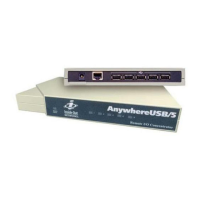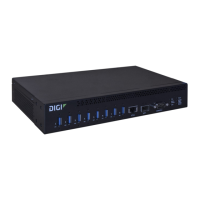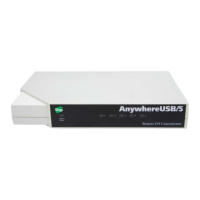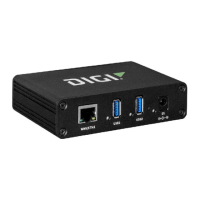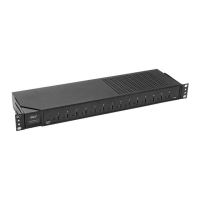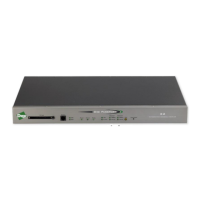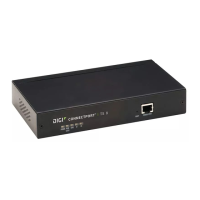Interfaces Wide Area Networks (WANs)
AnywhereUSB® Plus User Guide
162
If there allowlist entries are specified, incoming packets will only be accepted from the listed
MAC addresses.
a. Add a MACaddress to the allowlist:
(config network interface my_wan)> add mac_allowlist end mac_address
(config network interface my_wan)>
where mac_address is a hyphen-separated MAC address, for example, 32-A6-84-2E-81-58.
b. Repeat for each additional MACaddress.
8. Save the configuration and apply the change:
(config network interface my_wan)> save
Configuration saved.
>
9. Type exit to exit the Admin CLI.
Depending on your device configuration, you may be presented with an Access selection
menu. Type quit to disconnect from the device.
Configure a Wireless Wide Area Network (WWAN)
Configuring a Wireless Wide Area Network (WWAN) involves configuring the following items:
Required configuration items
n
The interface type: Modem.
n
The firewall zone: External.
n
The cellular modem that is used by the WWAN.
Additional configuration items
n
SIM selection for this WWAN.
n
The SIM PIN.
n
The SIM phone number for SMS connections.
n
Enable or disable roaming.
n
SIM failover configuration.
n
APN configuration.
n
The custom gateway/netmask.
n
IPv4 configuration:
l
The metric for IPv4 routes associated with the WAN.
l
The relative weight for IPv4 routes associated with the WAN.
l
The IPv4 management priority of the WAN. The active interface with the highest
management priority will have its address reported as the preferred contact address for
central management and direct device access.
l
The IPv4 Maximum Transmission Unit (MTU) of the WAN.
l
When to use DNS: always, never, or only when this interface is the primary default route.
